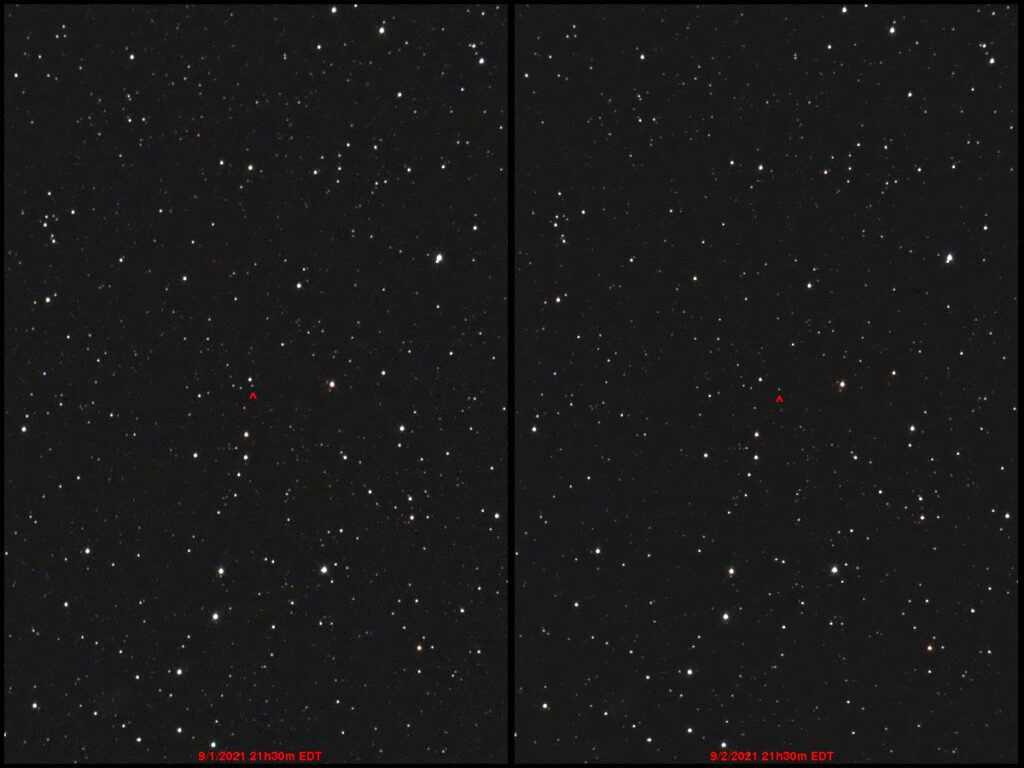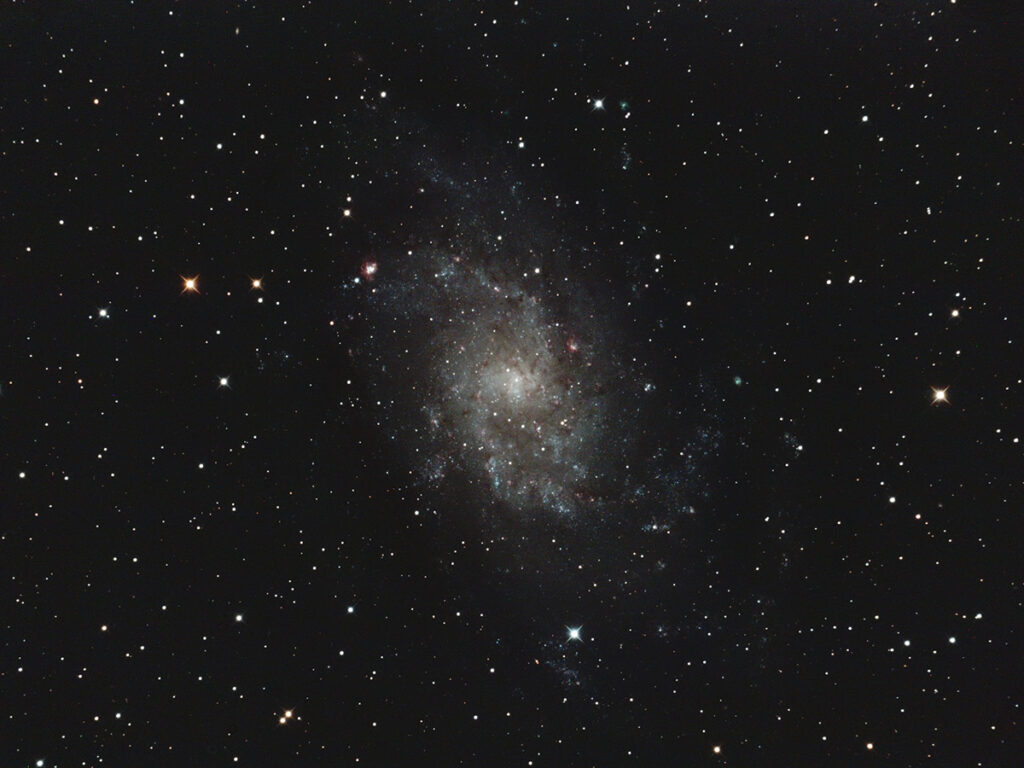
Telescope: 8” LX80 @ f/6.3, LX90 mount, altaz mode
Camera: Stock Canon 600D, interval timer
Filter: GSO IR Blocking Filter
Guide scope: None
Exposure: 30x5sec, ISO 1600, saved as RAW
Darks: Internal (Long Exposure Noise Reduction On)
Flats: 32×1/20sec, Tee shirt flats taken at dusk
Average Light Pollution: Red zone, Bortle 8, fair transparency
Lensed Sky Quality Meter: 18.5
Stacking: Mean with a 1-sigma clip.
White Balance: Nebulosity Automatic
Software: Deep Sky Stacker, Nebulosity, Photoshop
M11 is a bright and wonderfully rich open cluster just off the tail of Aquila. It is an easy binocular object that just gets keeps getting better in large telescopes. The cluster lies approximately 6000 light years away and contains an estimated 2900 stars in a volume of space about 20 light years across. The average distance between the stars in the cluster is about 1 light year, making this a very crowded neighborhood!
This is the first in a series of images that I will be taking to explore deepsky imaging using fairly basic equipment and techniques.
M11 is currently well placed in the southeast as the sky darkens.









Recent Comments